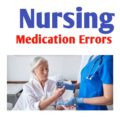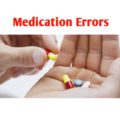Love and Other Drugs” is a romantic comedy-drama film released in 2010. Directed by Edward Zwick and based on the non-fiction book “Hard Sell: The Evolution of a Viagra Salesman” by Jamie Reidy, the movie stars Jake Gyllenhaal and Anne Hathaway in the lead roles.
The film follows the story of Jamie Randall (Jake Gyllenhaal), a charming and charismatic pharmaceutical sales representative who starts selling the newly developed drug, Viagra, in the late 1990s. Jamie’s easygoing and womanizing lifestyle takes a turn when he meets Maggie Murdock (Anne Hathaway), a young woman suffering from early-onset Parkinson’s disease. Despite initial hesitation, Jamie and Maggie fall in love, leading to a passionate and emotional relationship.
As the two navigate their personal and professional lives, they confront the challenges brought on by Maggie’s medical condition and Jamie’s commitment issues. The film explores themes of love, intimacy, and the complexities of human relationships.
“Love and Other Drugs” received mixed reviews from critics but was praised for the chemistry between the lead actors and its handling of sensitive topics. The performances of Gyllenhaal and Hathaway were particularly well-received, earning Golden Globe nominations for both actors.
Movies and media have long played a significant role in shaping popular culture and influencing various aspects of society. One topic that has drawn attention in recent years is the portrayal of medication use patterns in films. Love and Other Drugs has sparked discussions about its potential impact on medication use behaviors. In this article, we explore whether “Love and Other Drugs” and other media representations have any substantial influence on medication use patterns.
Media’s Influence on Public Perception
Movies and television shows have a powerful influence on shaping public perception. They can reinforce stereotypes, normalize certain behaviors, and impact attitudes towards various aspects of life, including healthcare and medication use.
In the context of medication use, media portrayals can have both positive and negative effects. On one hand, accurate depictions of medical conditions and appropriate medication use can increase health literacy and awareness. This can lead to individuals seeking medical advice and adhering to prescribed treatments, thereby improving health outcomes.
On the other hand, inaccurate or sensationalized portrayals of medication use can have adverse effects. Such representations may lead to misconceptions about medications, promote self-diagnosis, or encourage individuals to seek medications without proper medical evaluation. Additionally, media portrayals may sometimes overlook potential side effects, risks, and complexities associated with certain medications, leading to unrealistic expectations.
There have been instances where they inadvertently or directly encourage dangerous medication use. Here are some examples:
- Misleading Portrayals: In some cases, movies or TV shows may portray medications as a quick fix for complex medical issues without addressing potential risks or side effects. This can lead viewers to believe that medications are a cure-all solution and encourage self-medication without proper medical supervision.
- Glamorization of Substance Abuse: Films that glamorize drug use or prescription medication abuse can inadvertently encourage dangerous behavior. Characters portrayed as successful or glamorous while engaging in drug misuse may inadvertently create a false sense of desirability around substance use.
- Normalization of Self-Medication: Some movies or media portray characters who self-diagnose and self-medicate without consulting healthcare professionals. Such portrayals can inadvertently normalize self-medication practices, which can be dangerous as it bypasses proper medical evaluation.
- Over-the-Counter (OTC) Medications: Advertising for over-the-counter medications in media can sometimes exaggerate the effectiveness of these products or downplay potential risks. This can lead consumers to misuse or overuse OTC medications, thinking they are entirely safe.
- Product Placement: In some cases, movies or TV shows may feature product placements where specific medications are promoted subtly or explicitly. This can potentially influence viewers to seek out those medications without understanding their full implications or consulting healthcare providers.
- Online Influencers: In the age of social media, online influencers may unknowingly or knowingly endorse and promote questionable medications or supplements without proper scientific evidence. Their influence can reach a wide audience and lead to dangerous medication practices.
- Controversial Treatments: In rare cases, the media may feature sensationalized stories about unconventional or unproven treatments, leading vulnerable individuals to pursue untested medications or therapies with potential risks.
It’s important to note that while these instances exist, they are not representative of the majority of media portrayals. Responsible media outlets and healthcare organizations are increasingly aware of the importance of accurate and evidence-based information when it comes to health-related content.
Media Literacy and Critical Thinking
While media can influence attitudes and behaviors, it is essential to remember that films like “Love and Other Drugs” are primarily works of fiction and entertainment. They are not intended to serve as medical advice or accurate depictions of real-life situations.
Promoting media literacy and critical thinking is crucial to help the public distinguish between entertainment and reality. Encouraging viewers to question and verify information from credible sources can empower them to make well-informed decisions about healthcare and medication use.
Real-Life Medication Use Patterns
Medication use patterns are influenced by a complex interplay of factors, including healthcare provider recommendations, evidence-based guidelines, pharmaceutical marketing strategies, individual patient needs, and societal norms. While media representations can influence public perception, they are just one of many factors in this intricate equation.
The responsibility of promoting safe and appropriate medication use lies with healthcare professionals, pharmaceutical companies, regulatory bodies, and the media itself. Accurate and responsible portrayals of medical conditions, treatments, and medications in media can contribute to public health awareness and informed decision-making.
Conclusion
Movies and media, including “Love and Other Drugs,” have the power to shape public perception and influence attitudes toward medication use. However, the extent of their impact on real-life medication use patterns remains debatable. It is crucial to promote media literacy, critical thinking, and reliance on evidence-based medical information to make informed decisions about healthcare and medication use. Ultimately, the responsibility for safe and appropriate medication use lies with individuals and healthcare professionals alike.
Source: https://medssafety.com/is-love-and-other-drugs-influencing-medication-use-patterns/





